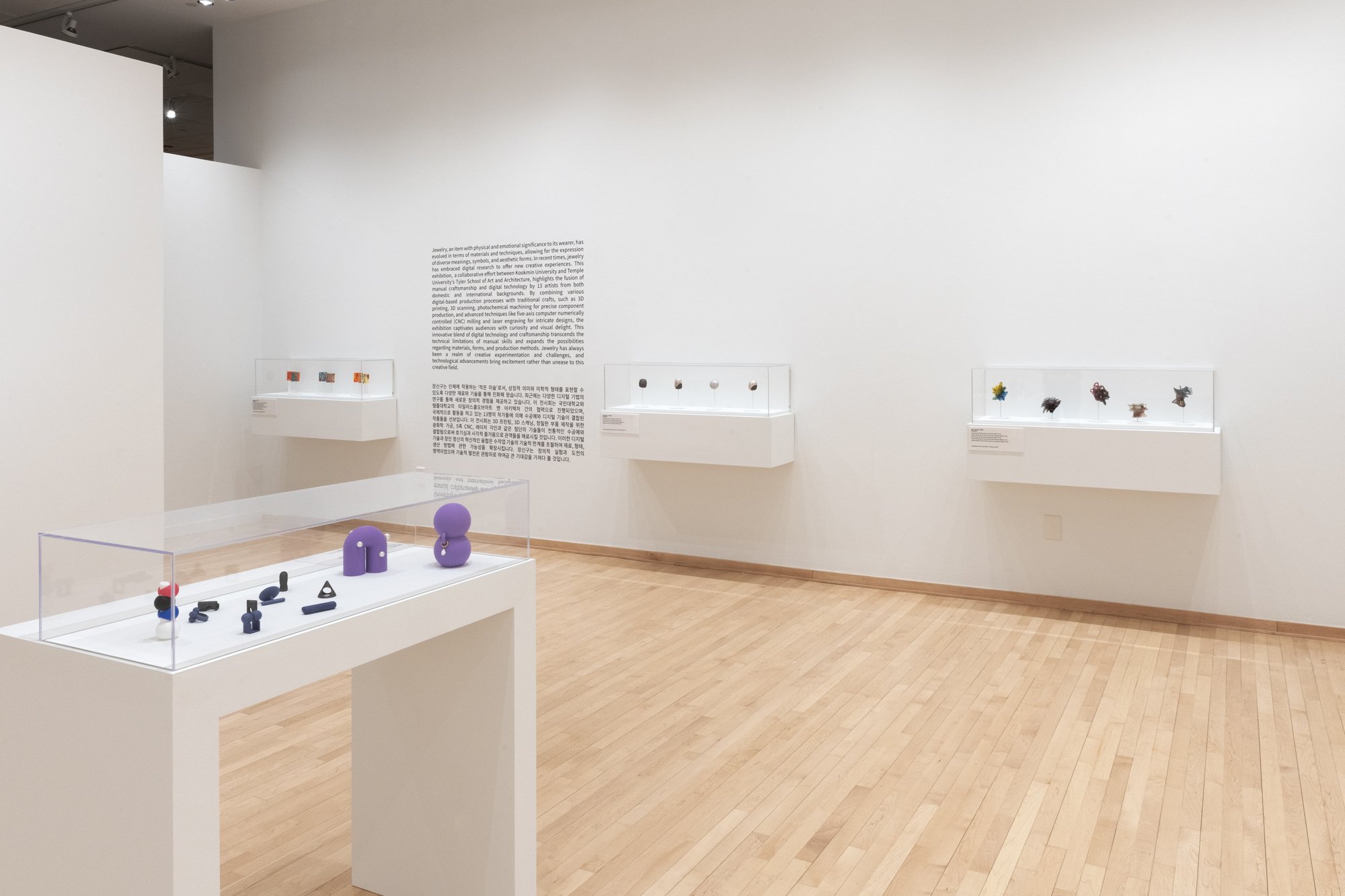All photos by Sam Fritch
DECORATIVE DIGITALISM
Temple Contemporary, Tyler School of Art and Architecture, Temple University, Philadelphia, PA
November 10, 2023 – February 4, 2024
I co-curated Decorative Digitalism with Professor Sugyeoul Lee as an invitational exhibition that explored the intersections of digital technology and traditional craft in contemporary jewelry and object-making. The exhibition originated during the pandemic in Seoul (2020) and later expanded into a cross-cultural collaboration between Kookmin University in South Korea and Temple University’s Tyler School of Art and Architecture.
Featuring the work of 13 international artists, Decorative Digitalism highlighted how digital methodologies are transforming jewelry and object design. These artists combined traditional techniques with processes such as 3D printing, 3D scanning, CNC milling, and laser engraving—pushing beyond the limits of manual craftsmanship to create intricate, precise, and conceptually rich works.
Presented alongside the Philadelphia Museum of Art’s exhibition The Shape of Time: Korean Art after 1989, co-curated by Elisabeth Agro and Hyun Soo Woo, our project contributed to a broader dialogue on contemporary Korean art’s engagement with technology. This partnership underscored the pivotal role of Korean artists in redefining digital craft and emphasized the intersections of jewelry, fine art, and digital fabrication.
As the head of the Metals/Jewelry/CAD-CAM area at Tyler, I saw Temple Contemporary as the ideal venue for Decorative Digitalism. Tyler has long been a leader in metals, jewelry, and CAD-CAM education—pioneering one of the first CAD classes for jewelry and metalsmithing in 1989. This early commitment to digital tools continues to inform our program’s ethos, blending craftsmanship with computational design.
Hosting this exhibition allowed our students, faculty, and the Philadelphia arts community to engage firsthand with the evolution of digital craft, sparking critical conversations around innovation, tradition, and the future of making.
I also produced an exhibition catalog that documented the 13 participating artists, their works, and the innovative processes they used. This publication extended the exhibition’s impact, providing deeper insight into each artist’s conceptual and technical approach and situating their work within the larger discourse of digital craft.
By bringing Decorative Digitalism to Temple Contemporary, I sought to reinforce Tyler’s legacy as a leader in digital craft education and to create a platform for international exchange—strengthening connections between Philadelphia’s artistic community and global developments in digital fabrication.




